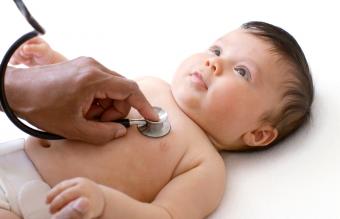
The NICU breast milk storage guidelines are similar to the guidelines specified for storing and using breast milk at home. Parents of high risk infants face many challenges, however. It is important that precautions are taken in the care and feeding of these babies.
Important NICU Breast Milk Storage Guidelines
In some cases, a mom may not have been discharged from the hospital while her infant is still in the NICU. In other cases, she may be at home. Depending upon the health of her newborn, she may need to pump, store, and transport her breast milk. The following NICU breast milk storage guidelines should be followed to ensure safe collection and storage of the breast milk.
Milk Collection
Before you begin pumping and storing your breast milk, you should familiarize yourself with all of the parts of the pump. In many cases, you may be supplied a hospital-grade electric breast pump. If not, you can rent one from a local medical supply store or purchase your own. While hand pumps are cheaper, they may not allow you to pump as quickly or as thoroughly.
Before you begin, you should do the following:
- Wash all parts of the pump that will come in contact with the breast milk. Before you use hot water to wash these pumps, however, rinse each one in cold water to get rid of any residual milk without coagulating stubborn protein deposits. It is also suggested that you should sterilize these parts in boiling water at least once a day to reduce the risk of contaminating the milk with bacteria.
- Read and follow the instruction manual for using the breast pump.
- Wash and rinse your hands before starting to pump.
- Wash and sterilize the breast milk containers.
Milk Storage
As you prepare the milk following the NICU breast milk storage guidelines, remember to only fill the containers about two-thirds full to allow for expansion of the milk when frozen.
- You should not combine milk that has been pumped during different sessions. If you pump from both breasts during the same session, however, combining the milk into one bottle is fine.
- Always label each collection container with the baby's name, date and time of collection, and any medications you've taken which might have crossed over into the breast milk.
Using Fresh Milk
If you plan on giving your infant freshly pumped breast milk, the following guidelines should be considered:
- Milk should be given to the baby within one hour after being pumped.
- Do not leave fresh breast milk out any longer than 30 to 60 minutes before it is given to the newborn.
- If you pump more milk than is needed for a feeding session, store the remaining breast milk properly.
- You should not freeze any refrigerated breast milk for more than 48 hours if the milk is to be given to a high-risk newborn.
Freezing and Storing Milk
- Milk can safely be stored from two to four weeks in the freezer compartment of a refrigerator.
- Milk can safely be stored from three to four months in an individual freezer that has a separate door in a refrigerator.
- Milk can safely be stored in a deep freezer at zero degrees Fahrenheit for approximately six months.
Transporting Breast Milk
If you are transporting breast milk from home, you should use an insulated cooler or insulated bag with ice packs to keep the milk cold. Consider the climate and the distance you must travel, and use extra frozen packs or ice bags as necessary.
Other Considerations
Finally, other considerations include the following:
- Transport freshly pumped milk in a cool state from home.
- If milk is frozen at home, maintain its frozen state during transportation.
- Keep only a 24 to 48 hour supply of milk at the hospital if you are able to pump and transport breast milk on a daily basis.
For more information, visit the La Leche League site.







